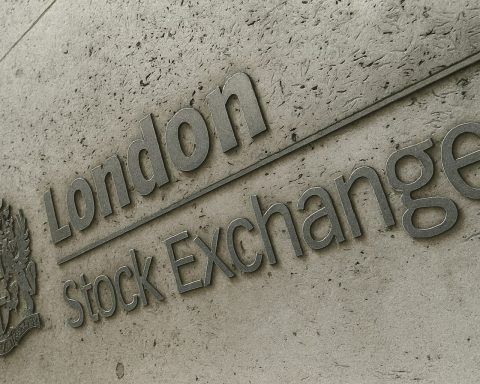The Federal Reserve’s newly released minutes from its October 28–29 meeting show a central bank that is more split, more cautious, and more data‑dependent than markets had hoped — and that’s forcing investors to rethink the odds of another interest‑rate cut at the December 9–10 meeting.
At that October meeting, the Federal Open Market Committee (FOMC) cut its benchmark federal funds rate by 0.25 percentage point to a target range of 3.75%–4.00%, the second reduction this year and a continuation of the Fed’s pivot away from the 5.25%–5.50% peak reached in 2023. [1]
But the minutes, published on November 19, 2025, make clear that what looked like a straightforward “dovish” move was anything but. Policymakers were sharply divided over whether to cut at all, and they are even more split over whether to ease again in December.
Investors, who just a month ago saw a December cut as nearly a sure thing, now view it as closer to a coin flip — and that uncertainty is rippling through stocks, bonds, the dollar, and commodities. [2]
Key takeaways from the October Fed minutes
- Policy rate cut, but with rare split dissents: The Fed lowered its benchmark rate to 3.75%–4.00% in a 10–2 vote — with one official wanting a bigger cut and another wanting no cut at all. [3]
- Three camps on December’s decision: Some officials see another cut in December as likely, others prefer to wait, and “many” already think no further cut this year is appropriate. [4]
- Inflation still above target, jobs cooling: PCE inflation is running around 2.8% year‑over‑year, above the Fed’s 2% goal, while job gains have slowed and unemployment has edged higher. [5]
- Government shutdown created a ‘data fog’: With key official reports delayed or canceled, the Fed is flying with fewer instruments, increasing the risk of policy mistakes. [6]
- Balance‑sheet runoff ending December 1: The Fed will halt quantitative tightening (QT) and reinvest maturing securities into Treasury bills, aiming to stabilize money‑market conditions. [7]
- Markets reprice rate‑cut hopes: Probabilities of a December cut have dropped from the 70–90% range to roughly 50% or less, contributing to heightened volatility in stocks, the dollar, and gold. [8]
What exactly did the Fed do in October?
At the October 28–29 meeting, the FOMC:
- Cut the federal funds rate by 25 basis points to 3.75%–4.00%
- Adjusted the interest on reserve balances to 3.90%
- Set the rate on its overnight reverse repo facility at 3.75%
- Confirmed it will stop shrinking its balance sheet on December 1, ending QT and reinvesting maturing agency securities into Treasury bills over time [9]
On paper, that looks like a standard easing move. In practice, the minutes show it was a compromise decision that papered over deep disagreement.
According to the minutes and subsequent analysis:
- “Many” participants favored cutting rates and could also have accepted holding steady.
- Several officials opposed any cut, warning that progress on inflation had stalled and that further easing risked signaling a weaker commitment to the 2% target. [10]
- The vote split was unusual: one dissenter wanted a bigger, 50‑basis‑point cut, while another dissenter wanted no cut at all. [11]
In other words, the Fed delivered a rate cut, but in a way that underscored just how uncomfortable many officials already are with how far policy has shifted.
Inside the Fed: three camps, one decision
The minutes and independent summaries describe three broad groups inside the FOMC when it comes to the December 9–10 meeting: [12]
- The “cut again in December” camp
- These officials see downside risks to employment rising and believe policy is still restrictive even after October’s move.
- They argue that another 25‑basis‑point cut would move rates closer to a “neutral” level while inflation pressures slowly recede.
- The “eventual cuts, but not necessarily in December” camp
- This group expects more easing over time but wants more data before acting again.
- With inflation running around 2.8% on the Fed’s preferred PCE measure, they worry about cutting too quickly and having to reverse course later. [13]
- The “no more cuts this year” camp
- Described in the minutes as “many participants,” this camp would prefer to hold rates steady through year‑end unless the data clearly deteriorate.
- They are concerned that additional cuts could entrench higher inflation expectations or be read as the Fed going soft on its 2% target. [14]
Fed Chair Jerome Powell signaled this split clearly in his October press conference, stressing that a December cut is “not a foregone conclusion” and that policy is “not on a preset course.” Those comments, echoed in the minutes, are one reason markets have had to dramatically re‑price their expectations. [15]
Inflation vs. jobs: the core policy dilemma
The October minutes make clear that officials see two‑sided risks:
- Inflation:
- PCE inflation around 2.8% in September, up from a year earlier and still above the 2% goal.
- Some officials worry that easing too quickly could unanchor longer‑term inflation expectations. [16]
- Employment and growth:
- Job gains have slowed compared with 2024, and the unemployment rate has moved up from its lows, even if it remains historically modest.
- Several policymakers see rising downside risks to employment and argue that keeping rates too high for too long could tip the labor market into a more serious slowdown. [17]
Commentary from economists and Fed watchers on November 19 captures this split. Some officials and analysts frame the biggest risk as “stubbornly elevated inflation”, while others are more worried about a “low-hire, low-fire” job market that could deteriorate into outright layoffs if policy stays tight. [18]
That tension — and the lack of clean data — is why the December decision is so uncertain.
The ‘data fog’: how the government shutdown complicates policy
A major factor behind the Fed’s caution is what the minutes and analysts call a “data fog”:
- A prolonged U.S. government shutdown delayed or canceled key reports, including October’s employment data and inflation statistics.
- The Bureau of Labor Statistics confirmed that no October jobs report will be released, and November’s report won’t arrive until December 16, after the Fed meets. [19]
- That means officials will largely be flying blind on the latest labor‑market dynamics when they sit down to decide rates next month.
The minutes show that “many participants” explicitly flagged this reduced data availability and urged a more deliberate, cautious approach under such conditions. [20]
Markets have taken note. As the data backlog slowly clears — starting with a delayed September jobs report due on November 20 — traders see each release as potentially pivotal for the December call, making day‑to‑day swings more violent than usual. [21]
End of QT: why the Fed is stopping its balance‑sheet runoff
Beyond rates, the minutes also outline a significant shift in the Fed’s balance‑sheet strategy.
Almost all participants agreed it is appropriate to stop reducing the size of the Fed’s securities holdings on December 1, concluding the quantitative tightening program that began after the pandemic‑era expansion. [22]
Key points:
- Money‑market conditions have tightened noticeably, with repo rates rising and usage of the Fed’s Standing Repo Facility increasing, signs that bank reserves are nearing “ample” but not abundant levels. [23]
- To avoid destabilizing short‑term funding markets, the Fed will:
- Reinvest all maturing Treasuries instead of letting them roll off, and
- Redirect principal payments from agency mortgage‑backed securities into Treasury bills, gradually shifting its portfolio toward shorter‑dated government debt. [24]
For markets, this means less upward pressure on long‑term yields from Fed runoff, but it doesn’t automatically imply easier overall policy: officials stress that the main tool remains the policy rate, not the balance sheet.
Market reaction: from relief rally to renewed volatility
Ahead of the minutes’ release on November 19, U.S. markets staged a partial rebound from recent losses:
- The Dow Jones Industrial Average was up about 0.1%,
- The S&P 500 roughly 0.7%,
- The Nasdaq Composite more than 1%, led by big tech as traders positioned for Nvidia’s earnings and the Fed minutes. [25]
In rates and commodities:
- The 10‑year Treasury yield edged up to around 4.13%, with the 2‑year yield near 3.58%.
- The U.S. dollar index hovered around the 100 level, stronger against the yen and several peers.
- Gold prices climbed above $4,100 an ounce as investors sought a hedge against policy and data uncertainty. [26]
After the minutes hit, early commentary described them as more hawkish than markets had hoped:
- Analysts noted that the detailed language — especially the emphasis on inflation risks and the sizable group opposed to a December cut — dampened expectations of near‑term easing, contributing to renewed selling pressure in major stock indices and a stronger dollar. [27]
- One key passage that caught attention: several officials highlighted the risk of a “disorderly fall in equity prices,” particularly in AI‑linked stocks, if investors abruptly reassess lofty valuations — a reminder that the Fed is watching financial‑market froth as well as inflation and jobs. [28]
Put simply, the minutes reinforced the message that rate cuts are not on autopilot — and that the market “Fed put” is far weaker than in the past decade.
What this means for households and businesses
For everyday borrowers and companies, the Fed’s new stance has practical implications:
Borrowers
- Mortgage rates:
- While long‑term mortgage rates have eased from their 2023 peaks, the Fed’s “maybe, maybe not” stance on further cuts makes a rapid drop in borrowing costs unlikely.
- Homebuyers may see modest relief, but affordability will remain challenging, especially if housing supply stays tight. [29]
- Car loans and credit cards:
- These rates remain closely tied to short‑term benchmarks. With the policy rate still well above pre‑pandemic levels, monthly payments on new borrowing are likely to stay high by recent historical standards.
Savers and investors
- Cash and deposits:
- Higher short‑term rates continue to benefit savers who can access competitive yields on money‑market funds and high‑yield savings products.
- Risk assets:
- Growth and speculative tech stocks, particularly in AI, are vulnerable to any perception that money will stay more expensive for longer.
- Value stocks and dividend payers may look relatively more attractive if rate cuts slow or pause. [30]
Businesses
Companies with:
- Heavy debt loads or rate‑sensitive business models (e.g., real estate developers, highly leveraged consumer firms) will feel prolonged pressure if borrowing costs remain elevated.
- Strong balance sheets, stable cash flows, and pricing power are better positioned to navigate a prolonged “higher for longer” environment — even if the Fed has already come down from peak rates. [31]
What to watch between now and the December meeting
With the minutes now public, markets are refocusing on three main catalysts ahead of the December 9–10 FOMC:
- Delayed jobs data
- The September employment report (released late due to the shutdown) and any private‑sector labor indicators will be parsed for signs of weakening hiring or rising unemployment.
- Because October’s official report is canceled and November’s arrives after the Fed meets, this September data will carry outsized weight. [32]
- Inflation readings and high‑frequency indicators
- Any surprise in inflation — up or down — could tip the internal balance toward a December cut or a pause.
- Commodity prices, shipping costs, and wage trackers will all help fill the statistical gap left by the shutdown.
- Fed speak and potential dissents
- Recent speeches suggest deepening differences among policymakers; some analysts now see a real possibility of multiple dissenting votes in December regardless of the outcome, something the Fed historically tries hard to avoid. [33]
For now, the Fed is sending one clear signal: it is not on a pre‑set easing path. The bar for further cuts is rising, and the absence of clean data makes every incoming number and every Fed speech matter more than usual.
Bottom line
The October 2025 Fed minutes are less about what the central bank just did and more about how uncertain it feels about what to do next.
- Rates are lower than they were a year ago, but still restrictive.
- Inflation is cooler than at its 2022 peak, but not yet comfortably at target.
- The labor market is slowing, but not clearly weak.
- And the Fed is trying to navigate all of that with a partial blindfold on, thanks to a historic data disruption.
For markets, households, and businesses, that adds up to a simple reality: the path of U.S. interest rates through the end of 2025 is now genuinely up for debate — inside the Fed and out.
References
1. www.federalreserve.gov, 2. www.euronews.com, 3. www.federalreserve.gov, 4. www.calculatedriskblog.com, 5. www.federalreserve.gov, 6. www.reuters.com, 7. www.federalreserve.gov, 8. www.euronews.com, 9. www.federalreserve.gov, 10. www.reuters.com, 11. www.federalreserve.gov, 12. www.ksat.com, 13. www.federalreserve.gov, 14. www.ksat.com, 15. www.fxstreet.com, 16. www.federalreserve.gov, 17. www.federalreserve.gov, 18. www.euronews.com, 19. www.marketpulse.com, 20. www.federalreserve.gov, 21. www.reuters.com, 22. www.federalreserve.gov, 23. www.federalreserve.gov, 24. www.federalreserve.gov, 25. www.reuters.com, 26. www.reuters.com, 27. markets.financialcontent.com, 28. www.federalreserve.gov, 29. www.ksat.com, 30. markets.financialcontent.com, 31. markets.financialcontent.com, 32. www.marketpulse.com, 33. www.euronews.com










